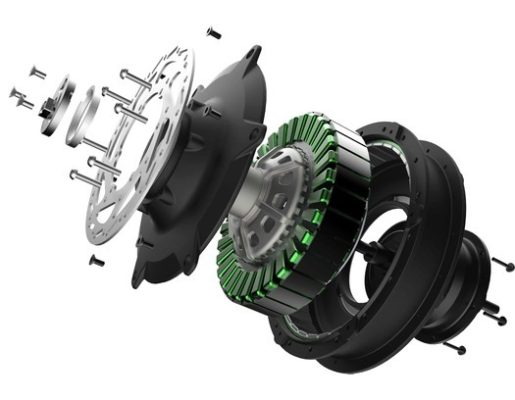Blog
Nominal vs. Peak Ratings in an Electric Scooter Hub Motor
At Edinburgh Scooters, we strive to provide our readers with valuable insights and information on the latest trends and technologies in the world of electric scooters.
One topic that has been on the minds of many electric scooter enthusiasts is the difference between nominal and peak ratings in an electric scooter hub motor. In this article, we’ll delve into the details of these ratings, what they mean, and how they impact the performance of an electric scooter.

Understanding Nominal and Peak Ratings
When it comes to electric scooters, the nominal rating refers to the average power output of the motor under normal operating conditions. This rating is usually lower than the peak rating, which is the maximum power output that the motor can generate under ideal conditions.
In other words, the nominal rating gives you an idea of the motor’s sustained power output, while the peak rating is an indication of the motor’s maximum power output in short bursts.
Why Nominal and Peak Ratings Matter
The nominal and peak ratings of an electric scooter motor are important factors to consider when purchasing an e scooter. A higher nominal rating means that the motor is more powerful and can sustain higher speeds for longer periods of time. On the other hand, a higher peak rating means that the motor can provide bursts of power for quick acceleration or to climb steep inclines.
It’s important to note that the nominal and peak ratings of an e scooter hub motor can vary depending on the manufacturer and model. Additionally, these ratings are not the only factors that determine the overall performance of an electric scooter. Other factors such as battery capacity, tire size, and rider weight also play a significant role in determining the performance of an electric scooter.
Nominal vs. Peak Ratings in Real World Usage
In real-world usage, the nominal and peak ratings of an electric scooter hub motor can impact the performance and riding experience of the rider. A higher nominal rating means that the rider can maintain higher speeds for longer periods of time, making it ideal for commuting or long-distance riding.
On the other hand, a higher peak rating is beneficial for riders who need quick bursts of power for acceleration or for tackling steep inclines. Riders who frequently ride uphill or off-road may find a higher peak rating more beneficial for their needs.
Choosing the Right Electric Scooter for You
When choosing an e-scooter, it’s important to consider your individual needs and riding style. If you plan on using your electric unicycle for commuting or long-distance riding, a higher nominal rating may be more beneficial for your needs. On the other hand, if you plan on using your electric scooter for off-road or hilly terrain, a higher peak rating may be more suitable for your needs.
Conclusion
In conclusion, the nominal and peak ratings of an electric scooter motor are important factors to consider when purchasing an electric scooter. While the nominal rating indicates the motor’s sustained power output, the peak rating indicates the motor’s maximum power output. Both of these ratings can impact the overall performance and riding experience of the rider.
At Edinburgh Scooters, we strive to provide our readers with comprehensive and informative content on the latest trends and technologies in the world of electric scooters. We hope this article has provided you with valuable insights on the difference between nominal and peak ratings in an electric scooter hub motor.

